2007 September
About Andrew Cusack
 Writer, web designer, etc.; born in New York; educated in Argentina, Scotland, and South Africa; now based in London.
Writer, web designer, etc.; born in New York; educated in Argentina, Scotland, and South Africa; now based in London. read more
News
Blogs
Reviews & Periodicals
Arts & Design
World
France
Mitteleuropa
Knickerbockers
Argentina
The Levant
Africa
Cape of Good Hope
Netherlands
Scandinavia
Québec
India
Muscovy
Germany
Academica
Along the Hudson
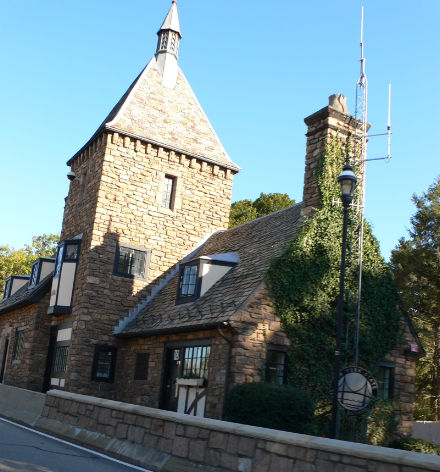
THE TOLLBOOTH AT THE Bear Mountain Bridge is built in a whimsical style meant to harken back to the Dutch patriarchs of old who roamed and ruled (and fell asleep in) these lands. The Bear Mountain Bridge spans the Hudson River between Bear Mountain and Anthony’s Nose, and was the longest suspension bridge in the world upon its completion in 1924. (As of 2007, it is the 62nd longest suspension bridge). The South Gate of the Hudson Highlands is composed of Anthony’s Nose rising from the east bank and Dunderberg (lit. thunder mountain) on the west, while Wind Gate between Breakneck Ridge and Storm King Mountain marks the northern reach of the Highlands. (more…)
USMA 37, Temple 21
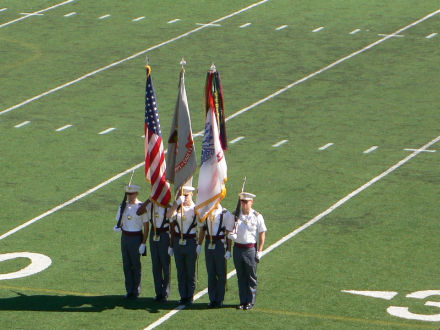
A HIKE UP into the Hudson Highlands, to see West Point trounce Temple University 37-21. (The last time I saw Temple play at Michie Stadium was in September 1994, when they beat Army 23-20). Army opened this game well by scoring a touchdown and field goal in the first minute, but gave the Temple Owls too much leeway, matching Army 21-21 by the half. Luckily, the Black Knights pulled through in the second half and finished the Owls off rather nicely. (more…)
God Guard Thee, Newfoundland
100 Years Since the Proclamation of Dominion
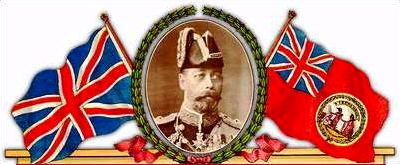
ON 26 SEPTEMBER, 1907, Edward VII, By the Grace of God, of the United Kingdom of Great Britain and Ireland and of the British Dominions beyond the Seas King, Defender of the Faith, Emperor of India, declared the Colony of Newfoundland, having enjoyed responsible government since 1854, the status of an independent Dominion within the British Empire. As it happens, the King-Emperor similarly declared New Zealand a dominion on the very same day. While New Zealand still enjoys dominion status as a free realm within the British Commonwealth of Nations, Newfoundland was profoundly struck by the Great Depression, and surrendered its independence in 1934. From that year it was administered by a Commission of Government headed by a Governor, all appointed by the imperial government in Whitehall.

The Red Ensign of Newfoundland, most commonly used as Newfoundland’s national flag, though the official national flag was the Union Jack.

The shield from Newfoundland’s coat of arms, adopted in 1653.
The Newfoundlanders proudly fought during the Second World War for the freedom of the Empire, but the post-war socialist government was only too keen to give up its responsibility in governing the colony. London and Ottawa both pressed for Newfoundland to join the Canadian Confederation, despite a significant portion of the populace being in favor of returning to responsible self-government. Many hoped that a once-again independent Newfoundland could negotiate an economic and customs union with the United States.
Rip van Winkle
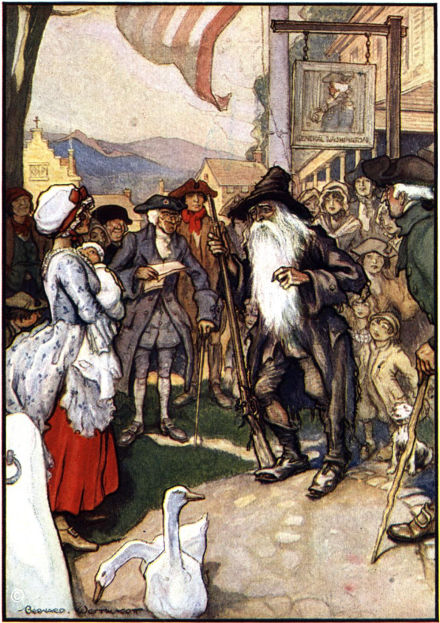
POOR RIP van Winkle; I always felt bad for him. He falls asleep for twenty years, and returns to his own native village where is now unknown and taken for some strange vagrant. “I am a poor quiet man, a native of the place, and a loyal subject of the king, God bless him!” he exclaims, in blissful ignorance of the Revolution which took place during his slumber. “A tory! a tory! a spy! a refugee! hustle him! away with him!” cry the by-standers.
I have long thought that Washington Irving was trying to make a subtle traditionalist point here: the definition of a good citizen has been arbitrarily changed. If a man was a good New Yorker in 1765 and hasn’t changed, why is he a traitor in 1785? It’s clearly ridiculous, except to proto-Jacobins and ideologues.
Anyhow, the lesson of the story: drink not from the flagons of odd-looking personages playing nine-pins amidst the Hudson Highlands.
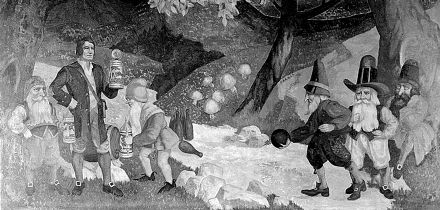
Previously: Rip van Winkle
They don’t all hate us
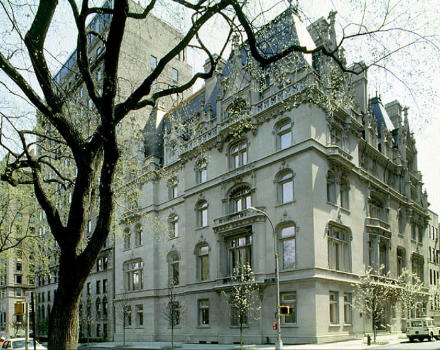
THE JEWISH MUSEUM sits at the corner of 91st Street and Fifth Avenue in the old Warburg mansion. It was expanded in 1993, nearly doubling its frontage on the avenue. See the modern addition? No? That’s the point.
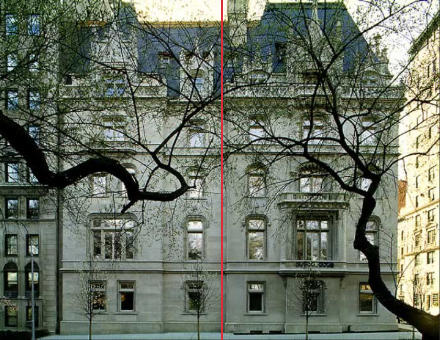
In the photograph above, the section to the right of the red line is the original Warburg house, built in 1909 and designed by C.P.H. Gilbert. The section to the left of the red line is the 1993 addition. If only the directors of the Morgan Library and the Brooklyn Museum had been similarly inspired.
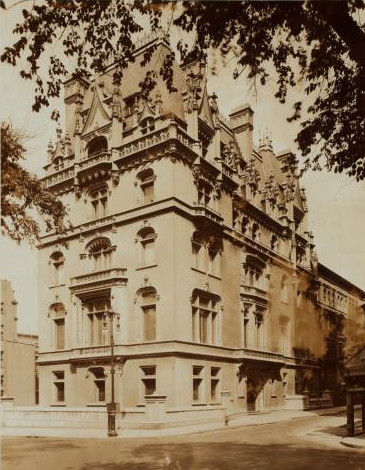
In which we partake of the televisual realm…
I WATCH VERY little television, mostly mysteries (Poirot, Lynley, etc.) and mostly only by the time it comes out on DVD. However I did catch a good few episodes of the BBC-HBO extravaganza Rome. Normally, I would not dream of dragging the sordid world of television onto this little corner of the web. Blame Daniel Larison, twas he who inspired me to take the “Which character are you?” quiz for Rome:
Missal Mania
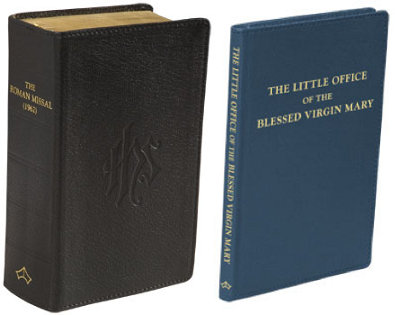
Baronius Press have reported a doubling in their sales of missals for the old Mass, or the “extraordinary form” as we are to call it now, since the release of the motu proprio Summorum Pontificum. Readers will be shocked to hear that I am actually a reactionary (however accidentally) because I only have a 1960 missal, not the 1962 missal which is the actual missal used at traditional masses. However, I would not object if anyone would like to gift me a brand spanking new 1962 daily missal from Baronius Press. The perfect gift for young Catholics: St. Nicholas Day is just around the corner! (Alright, over two months away, but still…).
Baronius Press are also coming out with the Little Office of the Blessed Virgin Mary, which has received an Imprimatur and will be available from sometime in October.
The Teatro Colón in Buenos Aires
Finest opera house of the New World
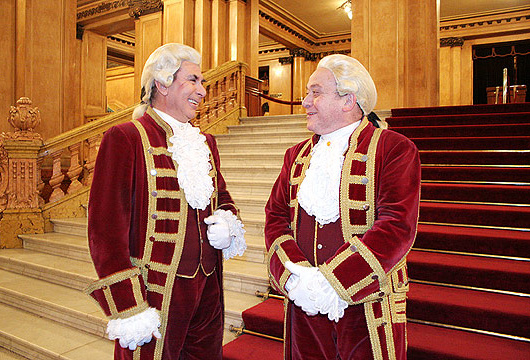
Am I old-fashioned, or aren’t footmen not supposed to smile?
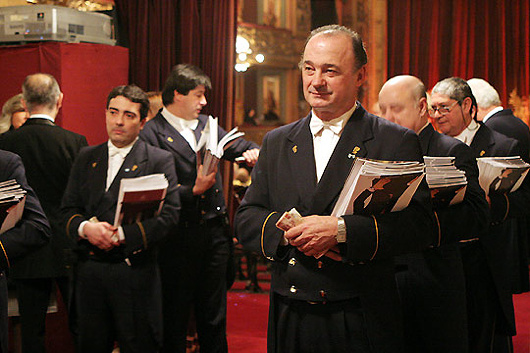
This usher knows precisely how much (which is to say, how little) emotion to show.
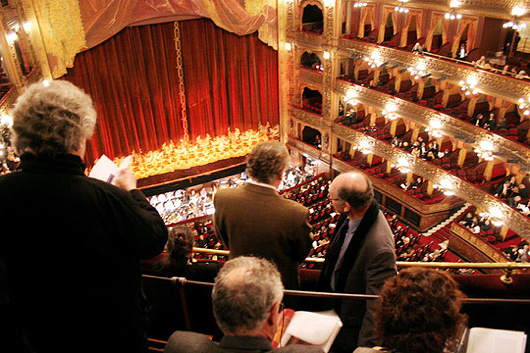
But now, everyone to their seats…
The magnificent Teatro Colón is currently closed for refurbishment until 25 May 2008, when the most prominent opera house under the Southern Cross will reopen brighter and better than ever.
A Mews in London
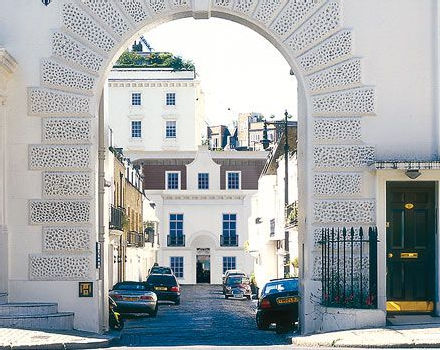
Typical London, and yet the gable on Lion Lodge (the building which terminates the view), together with the general white-wash of the façades, gives it a hint of Cape Town. Lion Lodge is a recent structure by Liam O’Connor Architects and Planning Consultants.
The Rathaus of Gladbeck
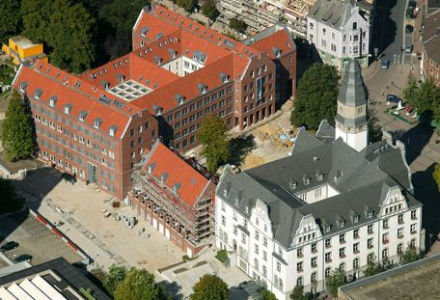
JUST SO YOU ARE aware that not all the architects hate us, let us travel to the Westphalian town of Gladbeck where the city fathers, in their infinite sagacity and wisdom and ever open to changes in inclination, have seen fit to correct the errors of the not-too-distant past by tearing down two hideous concrete boxes and replacing them with a more appropriate annex to the handsome art-nouveau Rathaus (town hall). The man to thank, apparently, is Gladbeck’s Stadtbaurat (town planning advisor) Herr Michael Stojan (a tweedy sort of fellow, it appears), who initiated the project. What a pity the directors of the Morgan Library could not exercise a similar wisdom.
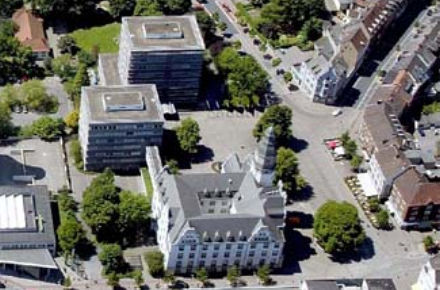
Gladbeck’s ‘Willy Brandt Platz’ before the offensive structures were removed.
The new building is modern but not modernist, and has no pretensions to being the original Rathaus’s contemporary. It exhibits a certain simplicity, and while it lacks exterior ornamentation it does not suffer much from that absence. Internal courts provide natural light to the offices within, while arcades offer shelter to passers-by in the event of an impromptu opening of the heavens. With its saddleback gables, the annex complements but does not compete with the town hall it is intended to augment. Improvements such as this are deserving of our applause.
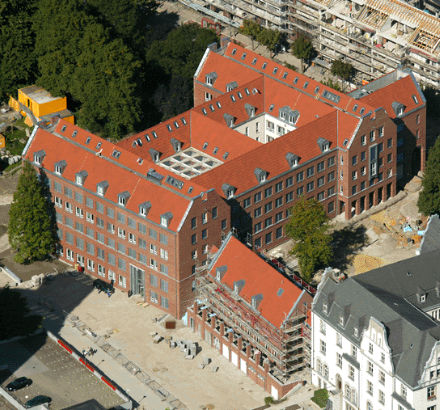
Elsewhere: Die Welt: Wie sich eine Stadt repariert (12 April 2007)
The Architects: They Really Hate Us
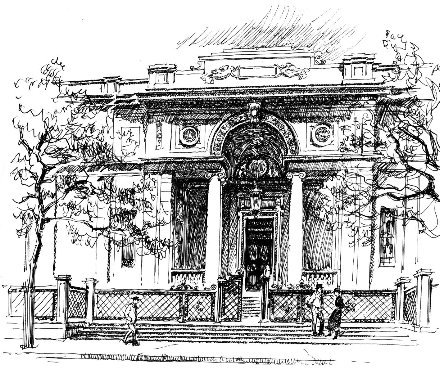
ONE OF THE GREAT things about the Morgan Library on 36th and Madison was that it used to reflect (and indeed protect) the glories of European civilization. Since its recent renovation, however, it merely expresses the post-civilization status of the mother continent. One cannot help but feel bad for poor Mr. Morgan, who would surely frown upon the vulgarity which has been thrust upon his life’s achievement: one of the finest collections of manuscripts, rare books, and drawings in the entire world. (more…)
Search
Instagram: @andcusack
Click here for my Instagram photos.Most Recent Posts
- Silver Jubilee November 21, 2024
- Articles of Note: 11 November 2024 November 11, 2024
- Why do you read? November 5, 2024
- India November 4, 2024
- The Lithe Efficiency of the Old Constitution November 4, 2024
Most Recent Comments
Book Wishlist
Monthly Archives
Categories



